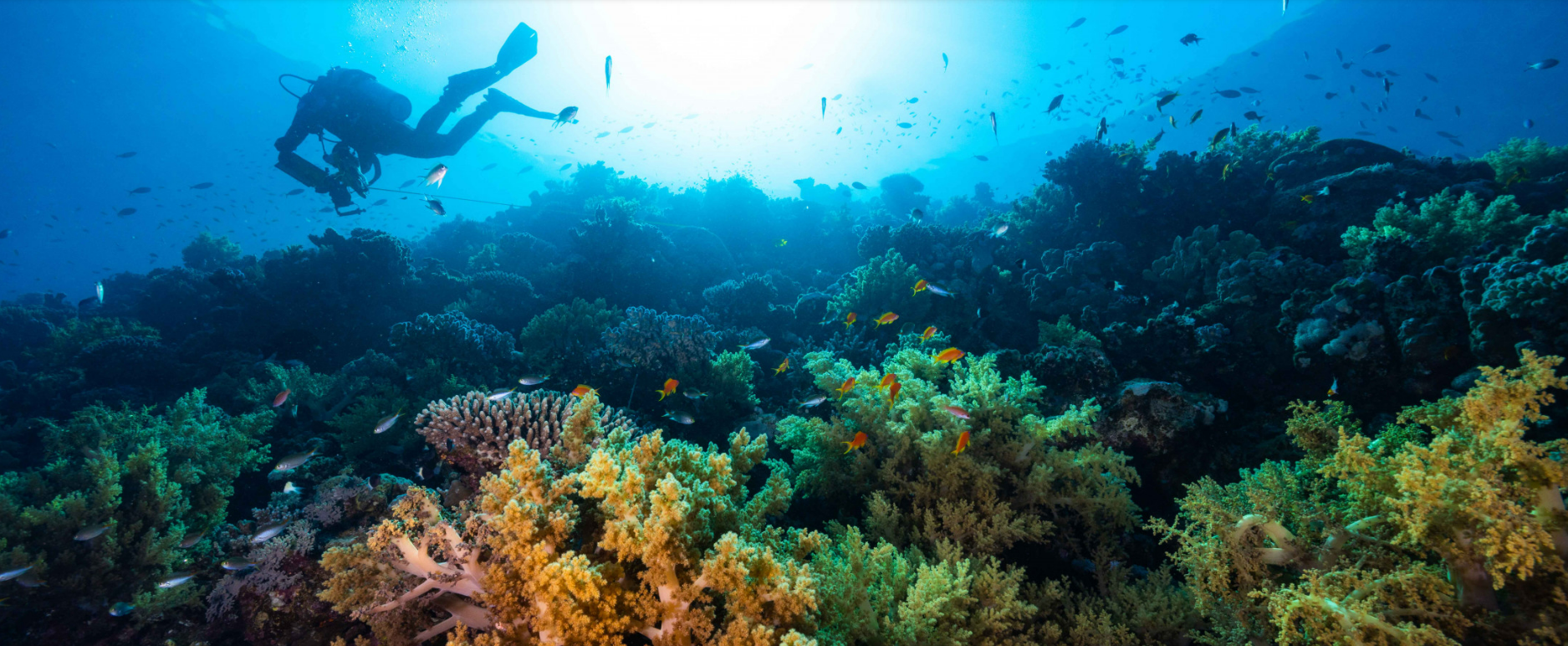The Red Sea is steeped in thousands of years of human history and Biblical myths, but its origins are much older, beginning roughly 30 million years ago when a chasm split between Africa and Arabia. In the 21st century, scientists say this unique sea is facing radical new changes and a precarious future.
Much of the uncertainty centers around its coral reefs. The Red Sea is home to an abundance of unique corals, fishes, and mollusks, around 14 percent of which can be found nowhere else. This biodiversity is little understood though, because it’s found buried deep within the reefs, leaving it difficult to sample and study.
Recently, scientists from the Florida Museum of Natural History and King Abdullah University of Science and Technology (KAUST) headed to the Saudi Arabian city of Jeddah to sample the biodiversity at the mouth of the Red Sea in a region called the Bab-el-Mandeb or Gate of Tears. In total, they found 6,000 specimens.
“In most cases, we don’t know what species or even what group we’re looking at,” Susana Carvalho, a professor at KAUST’s Red Sea Research Center, said in a statement.
“That led us to the idea that we needed to bring in taxonomists that could document what we have and help us improve local reference collections, including DNA reference libraries. This is the only way we can take advantage of the full potential of molecular-based biodiversity assessments in the future,” she added.

The Red Sea is home to unique coral reefs and very rich marine biodiversity.
Image credit: Morgan-Bennett Smith
Just as previous research has suggested, the researchers note there was worrying evidence of a decline and long-term damage in the sea’s southern reefs. This trend, they say, is inseparable from the wider patterns of decline seen in the world’s reefs as a result of climate change.
If Earth’s climate warms by 2°C (3.6°F) above pre-industrial levels, up to 99 percent of the world’s coral reefs will be annihilated. Corals are sensitive to rising temperatures because of the tiny algae cells that live in their tissues and provide them with nutrients. If the algae become stressed due to heat or pollution, they jump ship and the coral struggles to survive.
However, there’s some hope that the Red Sea’s coral reefs might be built a little differently. The waters in this part of the world are already surprisingly warm. Running down the Red Sea’s center is an abyssal trench that’s nearly 3.2 kilometers (2 miles) deep at its lowest point. Beneath the trench are a series of magma tubes that heat the surrounding water like a pan of water on a stove. Even near the bottom of the seafloor, temperatures can hover around 20°C (60°F) which is incredibly warm for deep water.
“Deep seas are cold-water environments […] One of the most bizarre aspects of the deep Red Sea is its warmth,” explained Gustav Paulay, curator of invertebrate zoology at the Florida Museum of Natural History.
Thanks to these balmy waters, there is some evidence to suggest that Red Sea corals have a super-high temperature tolerance, compared to coral species found elsewhere in the world’s oceans. This raises the question of whether the Red Sea’s reefs will be part of the 99 percent that will disappear under significant climate change – or whether they might be able to weather the storm.
If they do manage to persist, the Red Sea could potentially harbor the world’s last coral reef.
Source Link: The Red Sea Is Facing "An Uncertain Future"